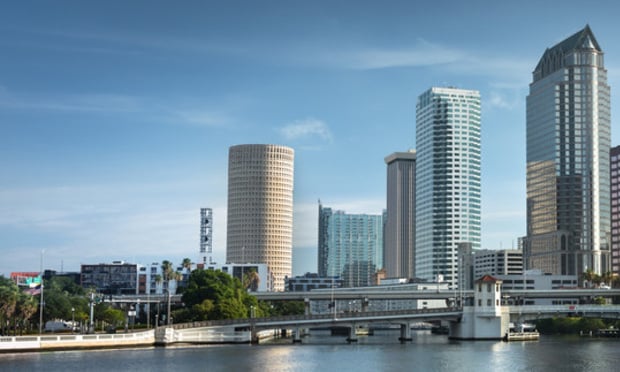(To read more on the industrial market, click here.)
SAN FRANCISCO-The Bay Area is a drag. That according to locally based industrial REIT AMB Property Corp., which reports in its 10Q this week that rental rates on industrial lease renewals and rollovers in its portfolio declined 7.6% in the third quarter, "primarily" due to rent roll downs in the San Francisco Bay Area. Without the impact of the Bay area, rents on lease renewals and roll downs in the company's 93-million-sf portfolio would have increased by 0.6% for its hub markets and increased by 1.4% for its total portfolio.
Having said that, the report adds that the company thinks the rents in place in its portfolio are approximately 5% above current market rents. "We believe that relatively high levels of national industrial space availability have caused market rents for industrial properties to decline between 10% and 20% from their peak levels in 2001," states the report. "This decline in market rents from their 2001 peak levels had a negative impact on our results as 38.1% of the space that rolled over in our portfolio in the third quarter of 2005 had commenced between 1999 and 2001."
Despite the decline in rents on renewal and rollover in the third quarter, AMB observes generally positive trends for rental growth in its portfolio as rental rates declined at lesser rates in five of the previous six quarters. "While the level of rental rate reduction varied by market, we achieved occupancy levels in our portfolio approximately 460 basis points in excess of the national industrial market [as determined by Torto Wheaton Research] by pricing lease renewals and new leases with sensitivity to local market conditions," states the report.
The strategy was to achieve those higher occupancy levels with shorter-term leases to prevent locking in the lower negotiated lease rates. "We now believe that industrial real estate fundamentals in general, and occupancy in our portfolio specifically, have improved to a level at which we may increase rental rates in selected markets, including Los Angeles, Seattle, Northern New Jersey and Miami," states the report.
In backing up its estimation of an improving market, AMB rattles off some third quarter data provided by Torto Wheaton Research. National industrial space availability declined 40 basis points from the prior quarter to 10.0%, resulting in a year-over-year decline of 110 basis points from 11.1% at Sept. 30, 2004. The decrease in national industrial space availability began in the second quarter of 2004, according to TWR, reversing the trend of the prior 14 quarters in which national industrial space availability increased on average 36 basis points per quarter.
Additionally, national absorption of industrial space--defined as the net change in occupied stock as measured by square feet of completions less the change in available square feet--totaled approximately 93 million sf in the quarter, the largest level of absorption since the fourth quarter of 2000. The figure is more than 50% better than the 60 million sf absorbed in the prior quarter and was well above the 10-year historical quarterly average of approximately 36 million sf, according to TWR.
Continue Reading for Free
Register and gain access to:
- Breaking commercial real estate news and analysis, on-site and via our newsletters and custom alerts
- Educational webcasts, white papers, and ebooks from industry thought leaders
- Critical coverage of the property casualty insurance and financial advisory markets on our other ALM sites, PropertyCasualty360 and ThinkAdvisor
Already have an account? Sign In Now
© 2024 ALM Global, LLC, All Rights Reserved. Request academic re-use from www.copyright.com. All other uses, submit a request to [email protected]. For more information visit Asset & Logo Licensing.








